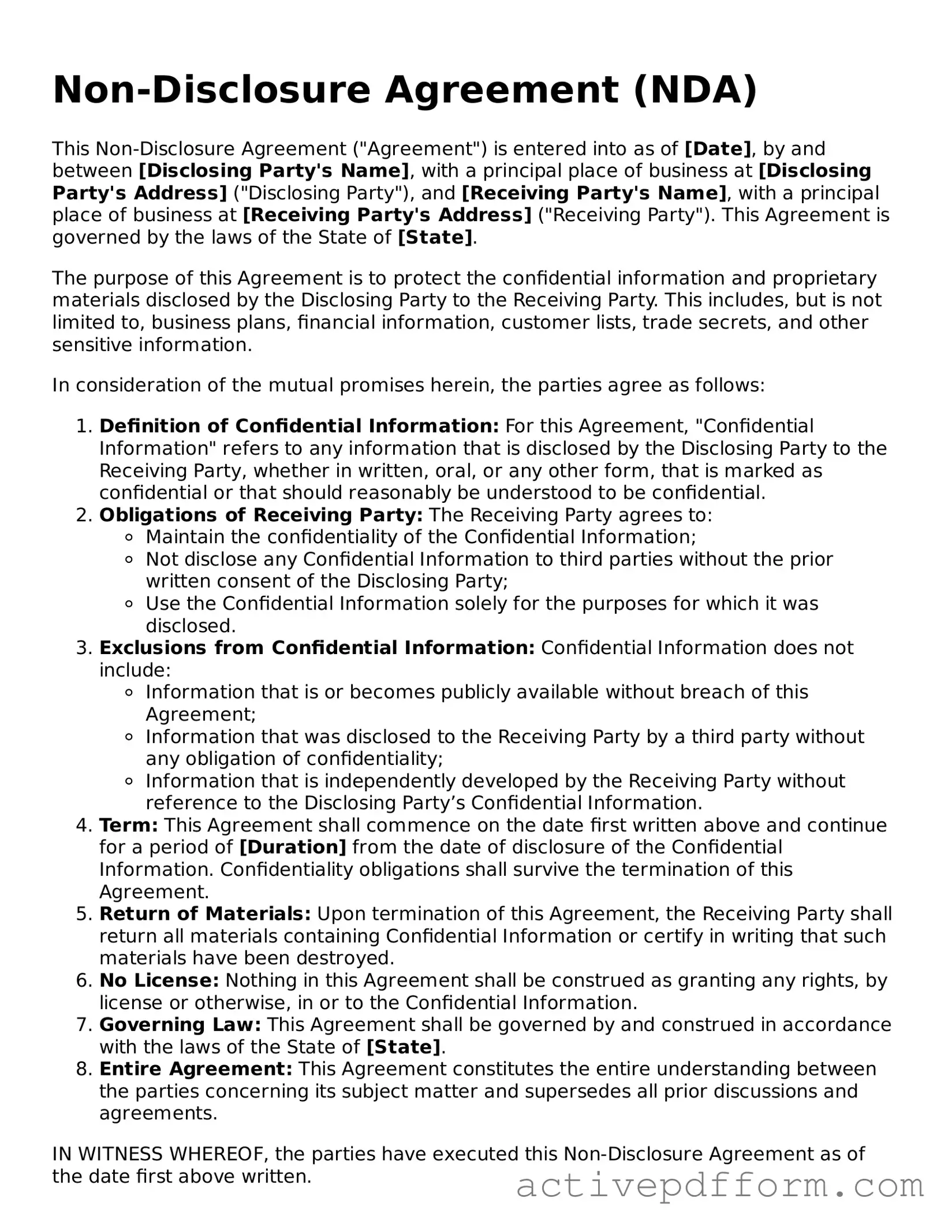What is a Non-disclosure Agreement (NDA)?
A Non-disclosure Agreement, commonly known as an NDA, is a legal contract that protects confidential information shared between two or more parties. It ensures that sensitive information remains private and is not disclosed to unauthorized individuals or entities.
Why would I need an NDA?
You may need an NDA if you are sharing sensitive information with another party, such as business plans, trade secrets, or proprietary data. An NDA helps to establish trust and safeguards your intellectual property from being misused or disclosed without permission.
Who can use an NDA?
Any individual or business that needs to protect confidential information can use an NDA. This includes entrepreneurs, employees, contractors, and companies engaging in partnerships or collaborations.
What types of information can be protected by an NDA?
An NDA can protect a variety of information, including but not limited to business strategies, customer lists, financial data, product designs, and any other proprietary information that is not publicly available.
How long does an NDA last?
The duration of an NDA can vary. Some agreements specify a fixed period, such as one or two years, while others may last indefinitely. It is essential to clearly outline the duration in the NDA to avoid any misunderstandings.
What happens if someone violates an NDA?
If someone violates an NDA, the affected party may take legal action against them. This could include seeking monetary damages or an injunction to prevent further disclosure of the confidential information. The specifics will depend on the terms outlined in the NDA.
Can I modify an NDA?
Yes, an NDA can be modified to fit the specific needs of the parties involved. Both parties must agree to any changes, and it is advisable to document these modifications in writing to ensure clarity and enforceability.
Do I need a lawyer to create an NDA?
While it is not required to have a lawyer to create an NDA, it is often beneficial. A legal professional can help ensure that the agreement is comprehensive and tailored to your specific situation, providing you with added protection.
Is an NDA enforceable in court?
Yes, an NDA is generally enforceable in court as long as it is properly drafted and the terms are reasonable. Courts typically uphold NDAs that are clear and protect legitimate business interests.
What should I include in an NDA?
An NDA should include the definition of confidential information, the obligations of the parties involved, the duration of confidentiality, and any exclusions. Additionally, it should outline the consequences of a breach and the governing law for the agreement.
